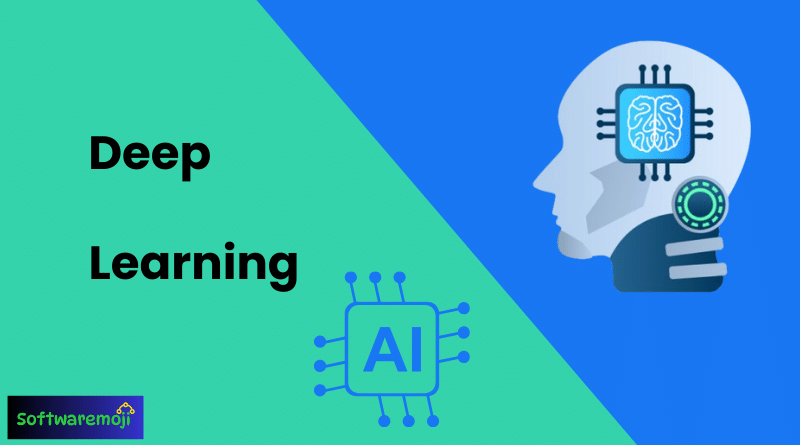
✔Beginner’s Guide to Deep Learning:
What is Deep Learning? Deep Learning is a subfield of artificial intelligence (AI) that emulates the human brain’s neural network. By leveraging artificial neural networks (ANNs), Deep Learning helps systems learn complex patterns from large datasets, enhancing decision-making capabilities. Unlike traditional machine learning, deep learning excels with unstructured data and large volumes, enabling innovations in fields like computer vision, natural language processing, and speech recognition.
In simple terms, Deep Learning uses multiple layers of artificial neurons to process and learn from input data, making it ideal for tasks like image recognition, automated translations, and predictive analytics.
✔Key Components of a Neural Network: Layers and Neurons:-
A neural network consists of:
- Input Layer: The first layer where data enters the network.
- Hidden Layers: Intermediate layers that process input data using learned weights and biases.
- Output Layer: The final layer that provides the predicted output.
The depth of the network, or the number of hidden layers, gives Deep Learning its “deep” nature, allowing it to learn more complex patterns than traditional models.
✔How Does Deep Learning Work?
Imagine a toddler learning to identify a “cat.” Initially, they may only recognize the basic shape, but over time, they start to focus on unique features like the tail, ears, and whiskers. Similarly, Deep Learning models learn hierarchical features in layers: simple features in the early layers and more complex features in the deeper ones.
The learning process involves:
- Phase 1: A nonlinear transformation of input data to generate an initial output.
- Phase 2: Refining the output through optimization techniques (like derivatives).
Through repeated iterations, deep neural networks improve their predictions, eventually reaching an acceptable accuracy level.
✔Classification of Neural Networks:-
Neural networks can be classified based on their architecture:
- Shallow Neural Networks: Networks with a single hidden layer.
- Deep Neural Networks (DNN): Networks with multiple hidden layers, capable of learning complex data representations. Google’s LeNet, for example, has 22 layers, making it ideal for tasks like image recognition.
✔Types of Deep Learning Networks:-
Different network architectures serve different purposes:
- Feed-forward Neural Networks (FNN): The simplest form, where information flows in one direction from input to output.
- Recurrent Neural Networks (RNN): Suitable for sequential data like text or time-series, RNNs use loops within their structure to retain information and make predictions based on previous inputs. Common applications include language modeling, financial forecasting, and anomaly detection.
- Convolutional Neural Networks (CNN): Primarily used for image processing, CNNs learn hierarchical patterns like edges, shapes, and textures in data. They are widely applied in computer vision tasks such as object detection, facial recognition, and image captioning.
- Reinforcement Learning (RL): An approach where agents learn through trial and error by receiving rewards or penalties based on their actions. Google’s DeepMind used RL to defeat world champions in the game of Go.
✔Applications of Deep Learning:-
Deep learning is revolutionizing multiple industries:
- AI in Finance: From fraud detection to credit scoring, deep learning models can make faster, more accurate financial decisions. AI-based systems also improve loan approval processes, making them more efficient and precise.
- AI in HR: Companies like Under Armour use AI for talent acquisition, reducing hiring time by 35% and streamlining the recruitment process.
- AI in Marketing: AI is optimizing customer interactions, personalizing marketing efforts, and improving customer service experiences. For example, AI-powered chatbots use natural language processing (NLP) to offer personalized communication.
✔Why is Deep Learning Important?
Deep learning has emerged as the most effective tool for predictive analytics and pattern recognition. By combining deep learning with big data, businesses can make highly accurate forecasts, boosting productivity, sales, and innovation. Deep learning outperforms traditional algorithms in many fields, such as image classification, facial recognition, and voice recognition.
✔Challenges and Limitations of Deep Learning:-
Despite its immense potential, deep learning faces several challenges:
- Data Labeling: The need for vast amounts of labeled data can be time-consuming and error-prone.
- Large Datasets: Effective deep learning models often require millions of data points, making them resource-intensive.
- Interpretability: Due to the complexity of deep learning models, understanding why a model makes a particular decision can be difficult, which is a barrier in regulated industries like healthcare.
✔Deep Learning in Practice: Real-World Examples:
- AI in Healthcare: Deep learning algorithms are used for diagnosing medical images, predicting diseases, and personalizing treatments.
- AI in Self-Driving Cars: Autonomous vehicles use deep learning to interpret sensor data and make real-time driving decisions.
- AI in Customer Service: Chatbots powered by deep learning understand and respond to customer queries, providing faster resolutions.
Confusion Matrix in Machine Learning:-
✔Summary:-
Deep Learning is the driving force behind many modern AI applications. By mimicking the neural networks of the human brain, it allows machines to learn from vast amounts of data, making it possible for them to perform tasks such as image recognition, speech analysis, and natural language processing. With applications spanning industries like finance, healthcare, and marketing, deep learning is poised to drive innovation and transform businesses.
This revised version is friendly, focusing on high-traffic keywords like “deep learning,” “neural networks,” “AI applications,” and “types of deep learning networks,” which should help the content rank well in search engines.
